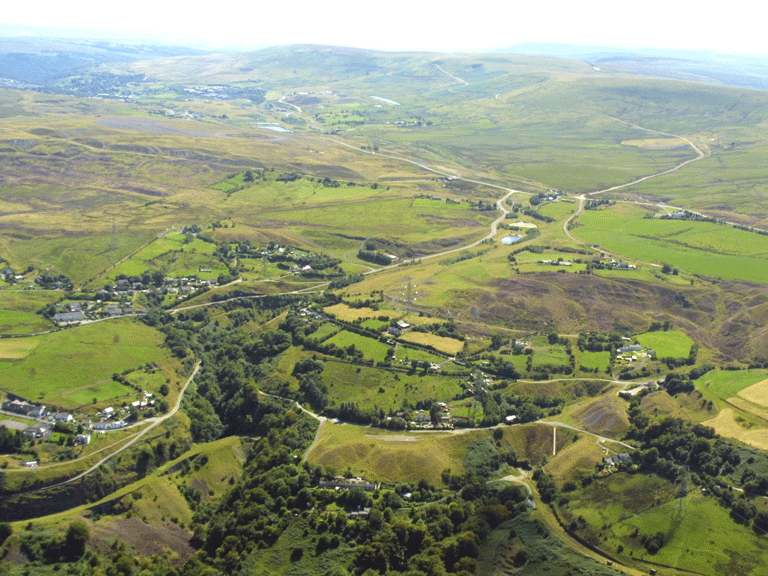Clydach Gorge
005 Gellifelen

HLCA 005 Gellifelen
Mining landscape of industrial workings including prominent waste tips; scattered post-medieval agricultural settlement and semi-industrial landholdings; minor stretches of industrial rail and varied lanes and tracks and bridges.Back to Map
Historic Background
The historic landscape area of Gellifelen, and the Llam-march Valley contains the largest area of surviving workings in the Clydach Valley associated with coal and iron ore extraction. The area is identified in 18th century leases (Beaufort Estate) as a primary mineral holding associated with and connected to the Ironworks at Clydach, and indeed the earlier charcoal works north of the river. The more extensive workings on Mynydd Rheinallt and Twyn-blaen-nant have been subject to wholesale reclamation during the latter part of the twentieth century.
The routes of the Llam-march Railroad of 1795 and Bailey's Tramroad of 1821 both the traverses the area, while the line of the MT & A Railway (1860-2) passes underneath the northern edge of the area, via tunnels cut into the hillside between Darrenfelen and Fedw-Ddu.
Historic Landscape Characteristics
Gellifelen is characterised as a mixed agricultural, industrial and residential area dominated by industrial workings along the boundary of the formerly enclosed land and the open mountain of Llanelly Hill. The workings lie within the small valley of Llam-march, an area of probable early mineral exploitation with exposure of mineral-bearing rocks visible in the stream valley. The waste tips appear to respect the established extent of the enclosed agricultural land within the area, as identified on estate maps.
The settlement of the area is characteristically scattered and set largely within small-holdings, with a few isolated short industrial rows at the northern fringes of the area, where they appear to have been established on formerly unenclosed woodland. The building stock is largely altered and comprises cottages and small farms.
Other characteristic features are more prevalent in the adjacent areas and include the routes of industrial rail networks and bridges including two listed examples: Devils Bridge and the Gellifelen Tramroad Bridge (both listed Grade II), the latter carried Bailey's Tramroad.
The boundary area between HLCA 005 and HLCA 006 forms part of the Cwm Clydach SSSI.